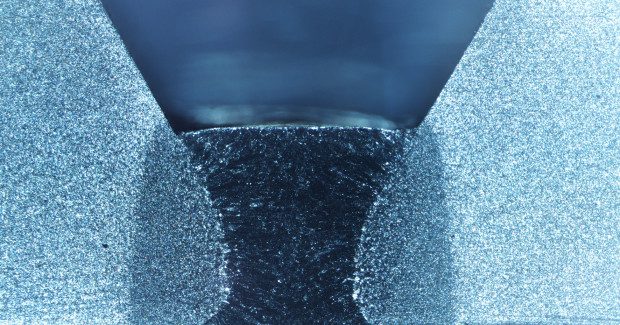New Arc Process for More Efficient Welding
A new algorithm uses the high processing power, large memory, extremely fast system bus and highly dynamic wire feed speed of the latest MIG/MAG power source platform to ensure an extremely stable arc with minimal spatter.
Posted: August 26, 2014
Four new arc variants from Fronius are expanding the advanced technological options of the TPS/i MIG/MAG power source platform. The characteristics of LSC (Low Spatter Control) Root and LSC Universal are based on a new algorithm and are characterized by increased arc stability and reduced spatter ejection. New welding parameters form the foundation for functions such as the penetration stabilizer, which are now available for the first time in all branches.
Proven arc length correction and dynamic correction functions have significantly improved. With the help of special hardware, the advanced versions of LSC Root and LSC Universal allow longer hosepacks to be used while ensuring the same level of welding quality. All of these innovations make the handling of the welding current source markedly easier, therefore guaranteeing optimal welding and brazing results even for those with little welding experience.
An entirely new algorithm has been developed for LSC that efficiently uses the high processing power, large memory, extremely fast system bus, and highly dynamic wire feed speed of the latest MIG/MAG power source platform in order to ensure an extremely stable arc with minimal spatter.
A demonstration of LSC (low spatter control).
The progress that has been made in running the root pass that was developed for LSC Root is of particular significance. LSC Root guarantees outstanding root formation and a high deposition rate with reduced energy per unit length. In contrast to conventional MAG welding, it is now possible to weld in a downward position too, without having to accept fusion flaws. This makes the root pass process much simpler for the user. The shielding gas loss was also reduced by up to three percent by using a new generation of torch.
The LSC Universal arc characteristic is particularly suitable for welding fillet welds, corner welds, lap joints, for filling and surface layers, and for brazing.
The users of the LSC arcs benefit from the new penetration stabilizer. On activation, the penetration stabilizer remains constant with stick out fluctuations, with the help of the new wire feed speed regulation. This can be freely set by the user. The effect is particularly positive for fillet welds, which are to be welded in an upward position with a weaving motion. The stabilizer ensures constant and deep fusion penetration, even with external disturbances, and excellent results can be achieved even when using less expensive solid wire.
The arc length correction and dynamic correction functions have also been further developed as important functions for welding. The arc pressure can now also be set with the LSC Root, e.g., via the dynamic correction.
The LSC package is completed with expanded functions that guarantee a high welding quality, at the start and end of welding too.
So that longer hosepacks, such as are usual with the construction of pipes and containers and also robot-aided welding, can be used without impeding quality, Additional hardware has been developed that reduces the negative impact of an increased inductance in the welding circuit. The advanced versions of the LSC Root and LSC Universal arc characteristics are available for the power source equipped with this hardware.
Fronius International GmbH is an Austrian company with headquarters in Pettenbach and other sites in Wels, Thalheim, Steinhaus and Sattledt. With 3,344 employees worldwide, the company is active in the fields of welding technology, photovoltaics and battery charging technology. Around 92% of its products are exported through 20 international Fronius subsidiaries and sales partners/representatives in over 60 countries. With its innovative products and services and 1,008 active patents, Fronius is the global innovation leader.

















